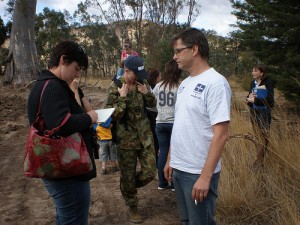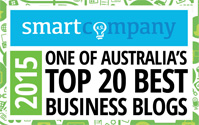Social Media fire-fighting… literally.
This is part 2 of my interview in Sydney with Peter Williams (@rexster), the CEO of Deloitte Digital.
I’ve already blogged about their policy and I had a bunch of other stuff I’d wanted to talk to him about. For example, Deloitte has a great relationship with the entrepreneurship program at RMIT and he’s been invited to speak at TEDxCanberra…
During the interview we got talking about social media and all of a sudden Pete was describing how he’d used it to help organise the relief effort in the town of Flowerdale after the Victorian Bushfires:
“[We used] social media and web 2.0 tools, like pbworks, blogger, vimeo and youtube, flickr to communicate, raise funds and build a temporary village and more importantly to help residents vision a safer and sustainable future.”
Here he is telling the story:
[field name = youtube]
TRANSCRIPT:
The biggest thing I learnt was self-organisation in a disaster – community works so much better than officials or agencies coming in. What tends to happen in a disaster is these people come in and say, “this is what we’re doing” as opposed to saying, “who’s on the ground, what do you need and how can we get it”. During the time I worked in Flowerdale we would have a meeting at 9:00 am every morning at the pub. 100-150 people would turn up everyday for six weeks and a couple of community leaders would tend to be thrust into these leadership roles. But instead of trying to tell people what to do, they would say, “hey, we need water for the temporary village”. Then someone would say, “hey, my mate works as a plumber and he can come in and help”. Or we’d need some chainsaws or barbeques so we’d ask if anyone knows anyone at Bunnings Warehouse. During the course of the day, it was almost like a rolling meeting. Not the sort of meeting to sit down and discuss stuff, people would just turn up and say, “hey, can you can do this? We need that”.
Social media played a part in it.
- We were the first community to set up a blog. We set up our own relief site because we knew that the money donated was going to take a long time to work through the system. The blog still runs today, I think we have around 400 posts.
- We used a Wiki to coordinate about 26 organisations which helped us build the first temporary village. All these guys just hopped on board coordinate and the only way to really coordinate people running about in a disaster zone was through a Wiki. One of the first things we did from Deloitte was we took up ten laptops that we had and and we grabbed some Next G cards Telstra gave us and set up little communication hubs around the place so people had access. Obviously if your house burns down your computer burns to go with it.
The other things that were crucial – you would get container-loads of clothes (most of which you wouldn’t need), but there was no laundry. So, Andrew Forrest gave us an industrial laundry which still runs today has almost become the number one thing in a disaster. It’s become a social hub of the places. The other thing is food. A hospitality college came up set up a marquee and there was a place for everybody to go and eat. Again, that helped build community resilience because people came together at lunch time and at the end of the day. The biggest lesson for me was that the world relies too much and expects governments to be able to handle these massive disasters. The reality is, nobody’s established to set up or has the spare resources to just click a button and make everything happen. But if you empower communities and get communities thinking about self-organisation, they can make things happen for themselves.
Business use is great but this was the application of social media in a raw, disaster response scenario. They raised $1.5 million in donations, built a village, co-ordinated the community and liaised with government and media throughout the process.

Peter Williams in Flowerdale talking to a reporter
You can check out the Flowerdale – Survivor Spirit blog too.
Not only did it contribute hugely to the rebuilding of Flowerdale but they were the first ever campaign outside the US to win a Forrester Groundswell Award for social media use. The Australian National Library has also requested permission to keep the blog in the national archive.
Thanks again to Pete for taking the time for the interview.
I actually saw another fantastic example of social media being used for not-for-profits written up by CNN Money a few days ago: Check out Bill Gates’ favourite teacher.
I’ve also been wondering if they might be able to apply some of Pete’s thinking to the Pakistan situation at the moment… Massive challenge.
Have you seen Social Media being used well for not-for-profits?

